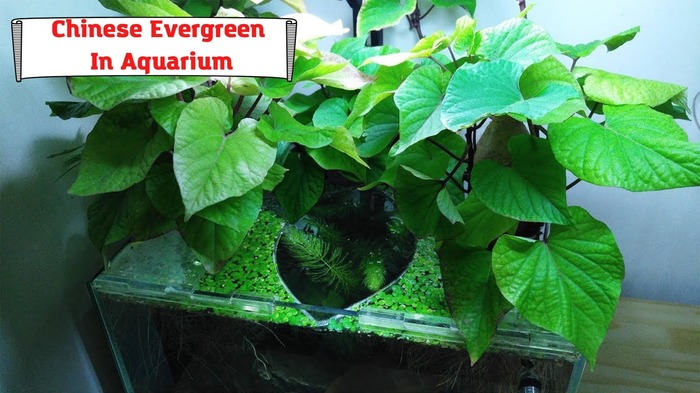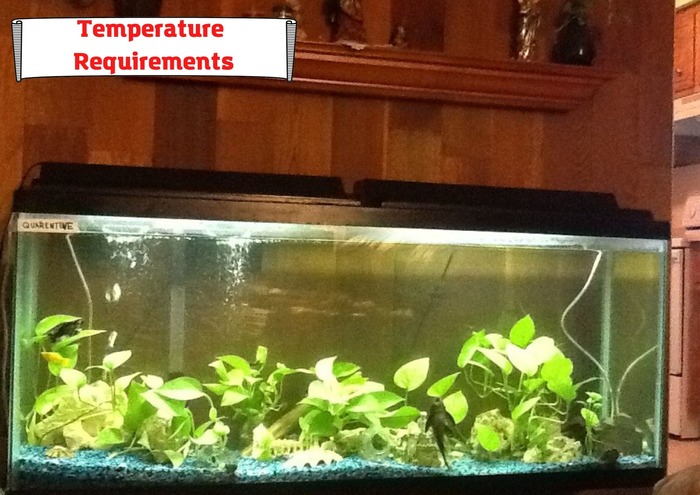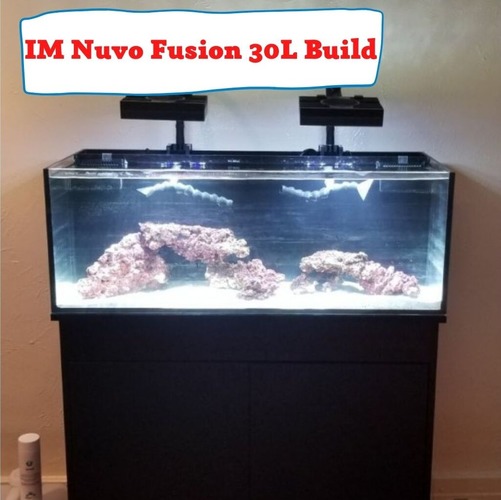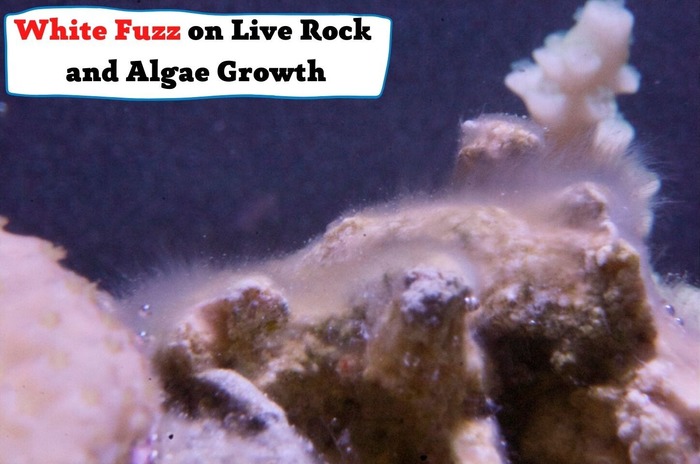
Have you seen people putting Chinese Evergreen in aquarium? You seemed to have liked the broad leaves of the plant. Do you think you should have it in your tank too? As it is not one of the most used aquarium plant virilities available, you must be skeptical about having it in your aquarium. Multiple aquarium owners consider using Chinese Evergreen in aquariums dangerous for some fish species.
So it is better to know everything about this plant before finalizing the decision of keeping them in your aquarium. This article covers:
- Factors affecting Chinese Evergreen Plants
- How does it fit in your aquarium?
- Best ways to keep your Chinese Aquarium
Non-aquatic plant
Primarily, the Chinese Evergreen is a non-aquatic plant. So, putting it in the aquarium is not considered one of the best ways to decorate your tank when you have the aquatic plants available. Anubias can be a great option in this regard with beautiful broad leaves.
If you still want to keep Chinese Evergreen in the tank, they can be kept in the riparian style, i.e., the roots in the water while the leaves out of it. But you must expect it to grow out of the tank so that it will be overflowing. So, you must be ready for it.
Lighting Requirement
The optimal light level for the Chinese Evergreen plant is low to medium. An indirect source of light will be even better when considering the growth of this beautiful plant. If you can manage such a light intensity in the aquarium, you can expect your plant to thrive.
Temperature Requirements

You have to maintain a warm temperature in the aquarium if you want to see your plant grow speedily and healthily. A mediocre temperature is also optimal for the fish, so your plants can easily survive in that environment. You will not have to do much about it.
Multiple varieties
You will find multiple types of Chinese Evergreen plants in the stores. The features of each of these plants are approximately the same, so you will not have to adjust your aquarium conditions if you want to switch between the varieties or add another one in your large tank. So, you have many options to choose the one to suit your tank.
Humidity and watering conditions
This home plant is grown in a highly humid environment and requires watering until it drains out, so cultivating them in an aquarium seems a good idea. They can tolerate the excessive water content present there. However, you cannot put the entire plant in water. You’ll have to keep its root in water and let the plant grow out of the aquarium. This means that you must be ready to keep the top of your aquarium open once the plant grows. Besides, one of the prominent issues that your plant might go through is rot root. This problem is often caused by excessive watering of the plants.
Susceptible to different pests
Aphids, spider mites, and mealy bugs are the primary pests that can affect your Chinese Evergreen plant. So, keep checking on your plant and its leaves to beware of the situation when it is still time to save it from the deadly infestation.
Low maintenance plants
While you are already caring for your fish and other aquarium pets, having Chinese Evergreen will not be an extra burden for you. It is a low-maintenance plant that will even help you maintain the internal environment of your closed ecosystem.
Milky White Sap
Chinese Evergreen contains a milky white sap. This white sap can be poisonous to living beings. Your fish might be affected by the white sap and the toxicity it can create in water. This means that keeping this plant in the aquarium will pose a higher risk for your fish. So, you cannot keep it in your aquarium if you already have fish. However, this is a thought presented by a particular group of individuals. At the same time, there is another school of aquarium experts who believe that this particular plant does not impact the fish adversely.
Purifies the surrounding
One of the most beneficial features that you can expect from this plant is the purification of its atmosphere. Growing it in the aquarium can help clean the tank water from ammonia and nitrates. As the plant outgrows the aquarium in most cases, you can expect the purity of the air too. It means that using this plant can help maintain the water quality and the air quality.
Plant fertilization
It is a slow-growing plant. But you’ll still have to add fertilizer to the aquarium to make it grow. In the aquarium, your plants can find the necessary nutrients like nitrogen, potassium, phosphorus from the fish waste present in the tank. So, the growth of this plant in the aquarium might not be as slow as you might find it in the plants kept indoors. The need for liquid fertilizers will depend on the other plants and animals living in your tank with the Chinese Evergreen plants.
However, like any other plant, Chinese Evergreen plants might encounter some problems during their lifecycle. As the plant owner, you must know about the potential problems and find the solution to prevent them so you will not have to fix them later.
So, let us share the potential health issues that your Chinese Evergreen plant might go through.
Wilting leaves
Although they are hardy plant species, they can still impact the water changes. If the plants remain a bit dry for a more extended period or are overwatered, you can see the wilting leaves. To prevent such a situation, you can avoid under-watering your plants and not immerse them in the water totally when you have them in your aquarium.
Falling leaves
If you have recently noticed an extra amount of falling leaves from the plant, this could result from a lack of sunshine. With lesser sunshine available for the plant, you can expect such a situation. So, you can put it close to the window where it can get some sunshine. But you still don’t have to provide it with the direct sunlight. These plants require indirect light.
Yellow leaves

If the leaves of your Chinese Evergreen plant have started getting yellow, then this indicates the presence of a stressor. The stressor can be anything from the temperature, sunlight, or water quality. So, you’ll have to check all these aspects to find out the reasons. Once you identify the reason, you’ll have to take specific measures to treat the problem.
If the yellowness in leaves has just started, you can expect your leaves to get better as well, but if it has been some time and the yellowness has entrenched most of the leave, you might not get hold of the particular leaves. But your plant will start blooming again.
Summing up
Chinese Evergreen Plant is a beautiful indoor plant variety used in the aquarium. However, it is not generally recognized as the plant made for your tank. It might provide benefits like water cleaning, but it also poses a risk to your fish. If your fish eats any part of the plant, it can be poisonous to them. So, you have to make a choice between a risk-free environment for your fish and a low-maintenance tank.
- Pleco Not Eating. Main Reasons Your Pleco Is Starving - February 21, 2022
- Foxface Fish Sting: Any Danger? And What To Do To Relieve Pain? - February 20, 2022
- White Stuff Coming Out Of Snail – Dangerous? Should You Worry About It? - February 19, 2022




